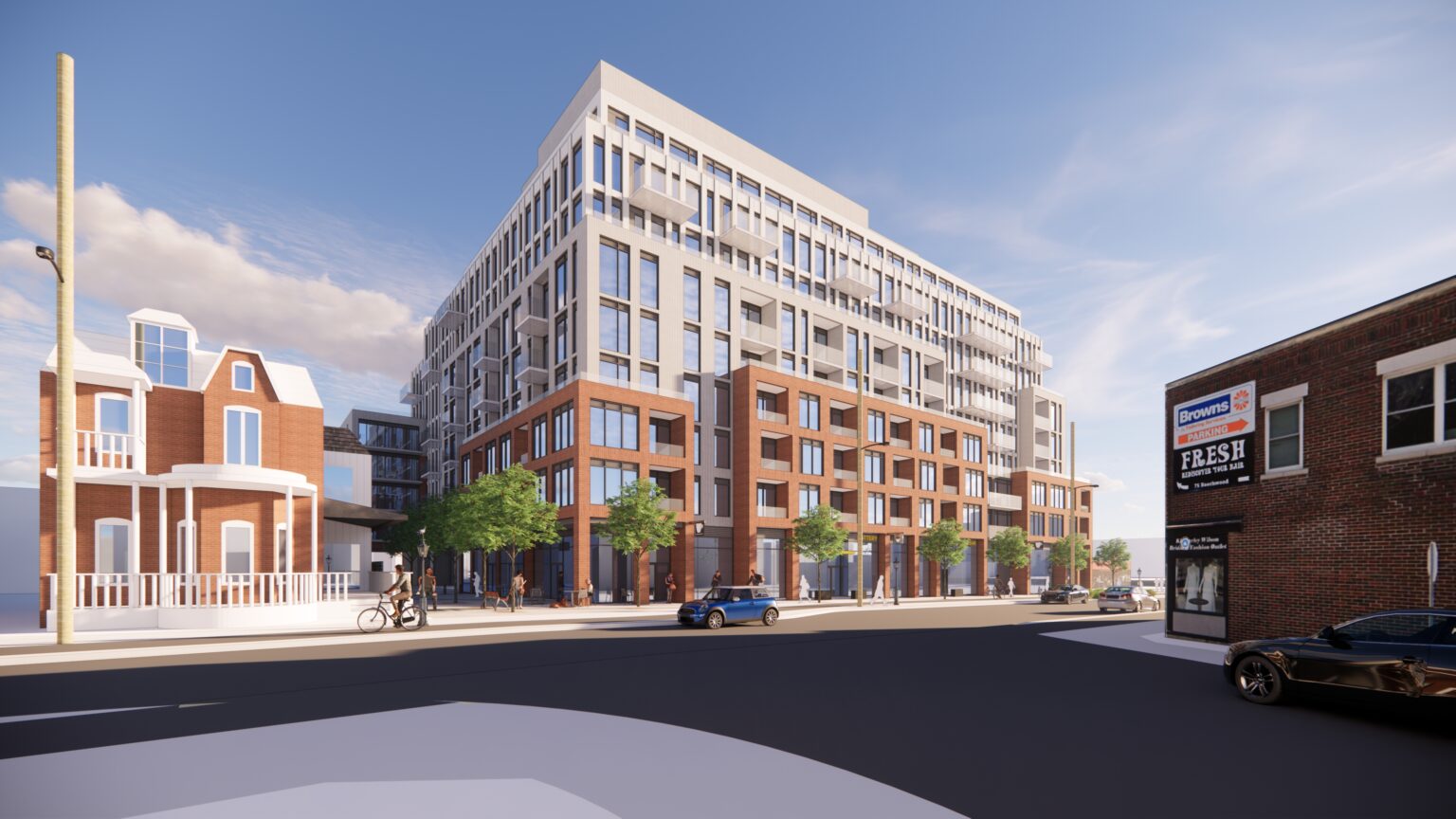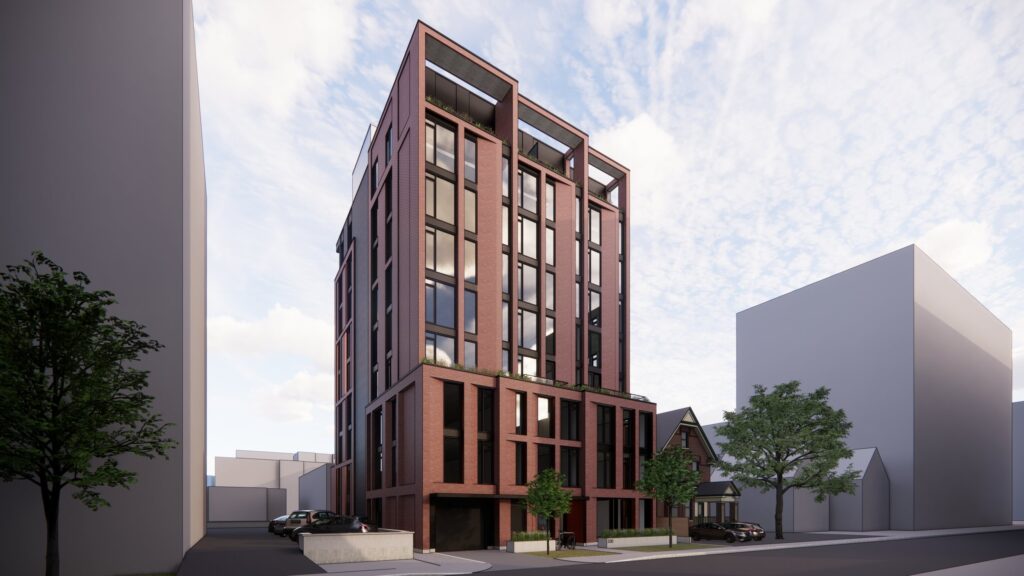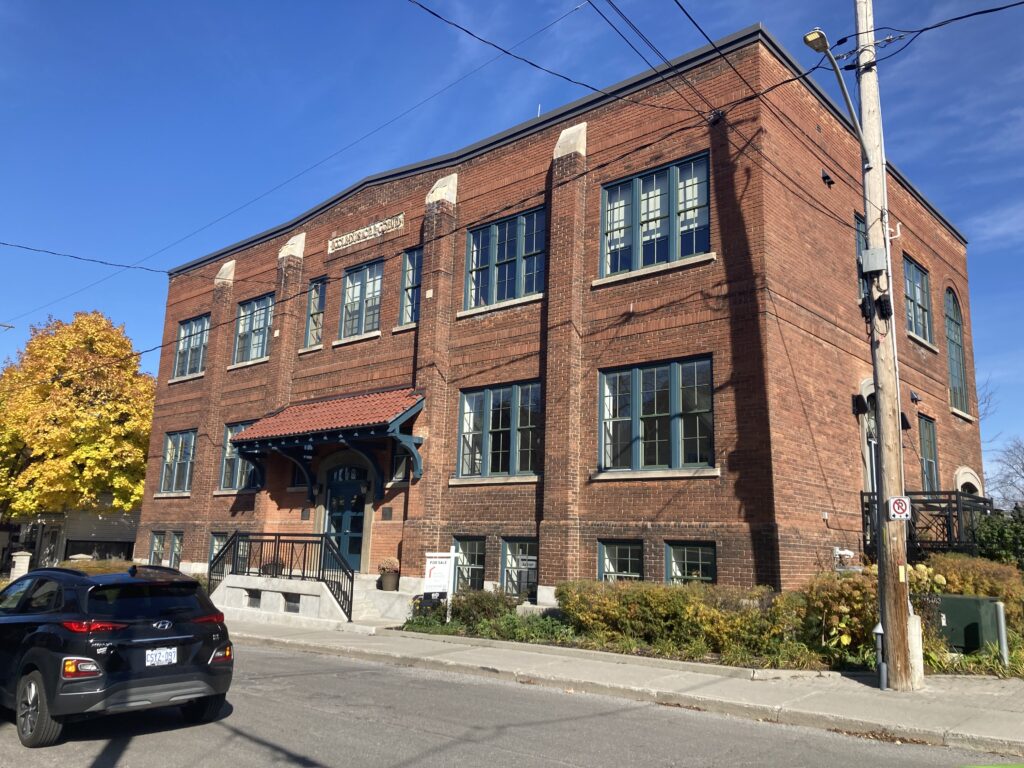1196 Wellington
TRACE was tasked with writing the CHIS for the proposed development at the location of the former Elmdale Theatre, in Hintonburg, Ottawa. TRACE worked with the design team to develop a strategy that honoured the intangible heritage value of this local icon. The character-defining sweeping curved canopy and mid-century theatre aesthetic were retained and re-imagined through its new design.

90 Beechwood
TRACE developed the CHIS for 90 Beechwood, for the development proposal of a 9-storey residential tower by Minto Communities. To assess the impact to the heritage fabric, the report focused on its neighbouring historic resources, including Part IV designated and municipal heritage properties. The team identified mitigation measures related to materiality, volume & mass, program, and streetscape character.

99 Fifth
TRACE worked with Minto to develop a CHIS for the re-development of property at 99 Fifth Avenue in Ottawa’s Glebe neighbourhood. The report investigated the historic fabric of the proposal in relation to its Bank Street context, a commercial streetfront the City of Ottawa considers to have community value. The report concluded that the potential positive impacts of the proposed development outweighed the potential adverse impacts to the surrounding heritage properties.

Château Laurier Addition Phase 1
TRACE developed the first version of the Château Laurier CHIS in 2017, in conjunction with Capital Holdings Ltd. The report analyzed the building’s design, evolution, and heritage value as part of a 2-volume cultural heritage impact statement. The review included 25 mitigation measures to improve the proposed development’s relationship to the existing building and broader context.

Kingston North Block
TRACE developed a Heritage Impact Study (HIS) & Urban Design Report for a development proposal adjacent to Kingston’s downtown core, also called “The North Block District.” Both reports assisted the design process to develop a compatible development that enhances the street character and historic roots of the area. After partnering with the City, the development was taken to the Ontario Land Tribunal and the proposal, as modified and recommended by TRACE, won the Tribunal’s decision.

230-232 Lisgar
TRACE developed the Cultural Heritage Impact Statement for the proposed development at 230-232 Lisgar Street, in collaboration with the developer and designs by Project1 Architects. The development proposal is a mid-rise residential building, replacing two early 20th century detached homes within the Centretown Heritage Conservation District. TRACE worked with the designers by proposing mitigation measures, to help retain the scale and street character of the Conservation District. The resulting design put forward to the City of Ottawa, speaks to the history and evolution of this historic Ottawa Neighbourhood.

MacPherson-Darou Farm
Working with the Town of Perth, TRACE completed the evaluation of this rural cultural heritage landscape, containing an abandoned 50-acre farm with 19th century house and barn, recognizing the degraded material integrity of the structures, characteristic natural farm landscape, challenges associated with adaptive reuse in rural areas, and connection with community heritage values. The final report with the Heritage Character Assessment were presented to full Council and were well received.

École Sacre Coeur
École du Sacre-Coeur was built in 1912-13, designed by Francis Sullivan early in his career, and sits on a half-acre site with a mixed surrounding context in Hintonburg. It was a functioning school for 75 years before being converted to a residence/daycare/education facility, and was subsequently unoccupied for several years. TRACE worked for the school board to pro-actively review the heritage character of the building, assist the designation process, and turn the scenario into a win-win-win for the Board, the purchaser/developer, and the community. It is considered one of the team’s conservation success stories.



